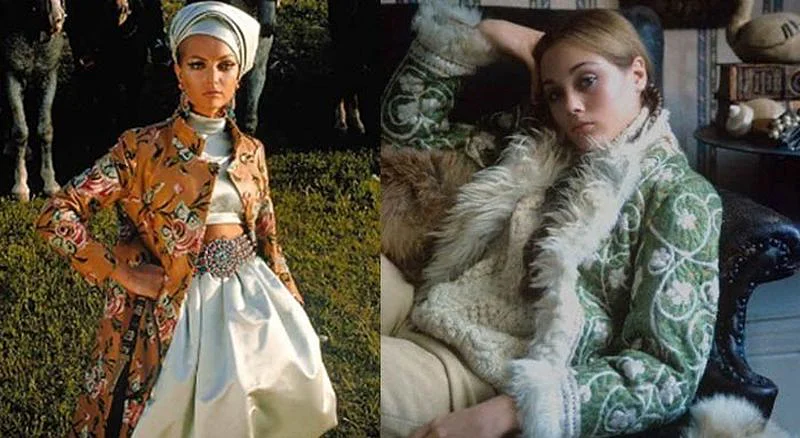
Modern Fashion Traditions call into question the dynamics of fashion systems and consumer areas outside of the West. Too often, these fashion systems are studied as a result of globalization and Western fashion influences, but this book examines their similarities and differences as legitimate fashion systems, challenging Eurocentric notions of tradition and modernity, continuity versus change, and ‘the West versus the Rest.’
Preconceptions about non-Western fashion are challenged by a variety of case studies from international scholars, such as street-style identity in Bhutan, the influence of Ottoman cultural heritage on contemporary Turkish fashion design, and an investigation into the origins of the word “fashion” in Chinese. Negotiating tradition, outside influences, and Western global dominance today.
Modern Fashion Traditions will provide readers with a better grasp of contemporary non-Western fashion identities. A nation’s modernization brings forth several aspects of change, one of which is fashion. Today, fashion in India gently embraces modernity by transforming it into traditional attire. People are gravitating toward novel materials and silhouettes in which a drape or structure combines traditional and western aesthetics, allowing us to create one-of-a-kind and intriguing ensembles. This has created a free-for-all environment for experimentation. The color pallet for traditional wear has been expanded to include soft pastel and earthy tones, as well as startling metallic colors with sharp and edgy cuts. Silver onyx, emerald, amethyst, and topaz tones, as well as metallic colors of rose gold, pewter, and light gold, add an edge to the clothing.
The great design adapts to the ever-changing expectations of consumers for a product, both in terms of function and aesthetics. Consumers are continually asking for products that can do more, be more adaptable, clever, and look good in a variety of settings.
Designers are blending contradictory identities to develop a distinct language of clothing that caters to modern Indian women who cherish the festivities and their meaning while also being able to move quickly and unconcerned about their presence in the ensemble she is wearing.
Modern Fashion Traditions are a provocative examination of the fashion phenomena observed in non-western cultures that are building fashion cities and consumption venues in contrast to mainstream ‘western’ fashion. To date, non-western fashion (as opposed to attire) has been studied as a byproduct of globalization and the broad spread of western fashion rather than as distinct fashion systems with their logic, tensions, and histories. This chapter, in particular, investigates the similarities and variations within and between these self-contained yet dynamic and dialectical fashion systems seen in a variety of non-western areas and circumstances.
The overarching framework used to investigate this phenomenon challenges the key oppositions conventionally used to describe fashion in non-Eurocentric contexts, namely: tradition and modernity, continuity versus change, local versus global, commodification versus self-expression, and self-orientalism versus nationalism; most importantly, the volume challenges the assumption of fashion as ‘the West versus the Rest.’
To challenge stereotypes about non-western fashion, the chapters of Modern Fashion Traditions bring together case studies from varied contexts that are cultural powerhouses with distinct fashion systems, such as Japan, China, India, Bhutan, Turkey, Africa, and Australia. Throughout, authors challenge the assumption that tradition is the foundation of non-western dress habits, arguing instead that there are dynamic interplays and re-workings of mainstream global fashion to carve out unique and robust fashion cultures and subcultures with distinctively local references. Furthermore, these violate conventional wisdom regarding the phenomena of fashion and the defining role of Eurocentrism as the dominant force in the formation of powerful fashion cultures and identities. From 1826 through 1895, Charles Frederick was the world’s first fashion designer who was also a draper. He established conventional fashion firms and advised his clients on the types of outfits that would suit him.
During this time, several design firms began to recruit artists to create garment designs. Customers will be shown designs, and if they like them, they will make an order.
During this time, the custom of supplying patterns to consumers and then sewing them arose, and ready-made outfits were supplied to them.
When the fashion industry radically transformed in the twentieth century, this was merely the beginning. The public embraced the modern concept of fashion, which was compelled by the expansion of the entertainment industry.
The music and film industries provided fresh sources of inspiration to the general public. We may now get fashion inspiration and fashion websites thanks to current technology.
Fashion apparel began to be mass-produced in the middle of the twentieth century. People grew to value clothing more as mass production developed.
By the end of the twentieth century, people’s fashion knowledge had grown, and they began to choose garments based on comfort and style, rather than on commercial trends. Another big change in the fashion design industry has been the greater use of computers and technology. Many software applications have been developed to assist designers in the design phase as well as subsequent stages of apparel manufacture.
Fashion design is more than just creating clothes; it is a world of fashion, design, creativity, technology, and business.
